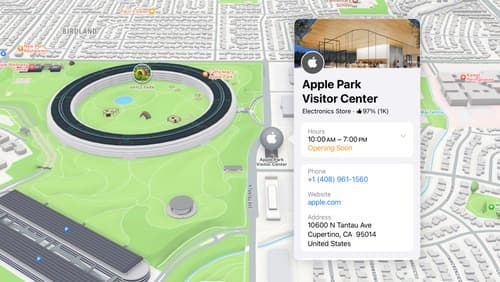How do I apply clustering to pins in MapKit?
Asked on 2024-07-31
1 search
To apply clustering to pins in MapKit, you can use the MKClusterAnnotation class, which groups multiple annotations into a single cluster annotation when they are close to each other. This helps in managing the display of a large number of annotations on the map, making it more user-friendly and less cluttered.
Here's a basic example of how you can implement clustering in MapKit:
-
Enable Clustering: Set the
clusterIdentifierproperty of your annotations to a non-nil value. This tells MapKit that these annotations should be considered for clustering. -
Create Annotations: Create your annotations and set their
clusterIdentifier. -
Add Annotations to the Map: Add the annotations to your map view.
-
Customize Cluster Annotations: Optionally, you can customize the appearance of the cluster annotations.
Here is a sample code snippet:
import MapKit
class ViewController: UIViewController, MKMapViewDelegate {
@IBOutlet weak var mapView: MKMapView!
override func viewDidLoad() {
super.viewDidLoad()
mapView.delegate = self
// Create and add annotations
let annotations = createAnnotations()
mapView.addAnnotations(annotations)
}
func createAnnotations() -> [MKAnnotation] {
var annotations: [MKAnnotation] = []
for i in 0..<100 {
let annotation = MKPointAnnotation()
annotation.coordinate = CLLocationCoordinate2D(latitude: 37.7749 + Double(i) * 0.01, longitude: -122.4194 + Double(i) * 0.01)
annotation.title = "Pin \(i)"
annotations.append(annotation)
}
return annotations
}
// MKMapViewDelegate method to customize cluster annotations
func mapView(_ mapView: MKMapView, viewFor annotation: MKAnnotation) -> MKAnnotationView? {
if let cluster = annotation as? MKClusterAnnotation {
let identifier = "cluster"
var view = mapView.dequeueReusableAnnotationView(withIdentifier: identifier) as? MKMarkerAnnotationView
if view == nil {
view = MKMarkerAnnotationView(annotation: cluster, reuseIdentifier: identifier)
}
view?.markerTintColor = .red
return view
} else {
let identifier = "pin"
var view = mapView.dequeueReusableAnnotationView(withIdentifier: identifier) as? MKMarkerAnnotationView
if view == nil {
view = MKMarkerAnnotationView(annotation: annotation, reuseIdentifier: identifier)
}
view?.markerTintColor = .blue
return view
}
}
}
In this example:
- We create a number of
MKPointAnnotationobjects and add them to the map. - We implement the
mapView(_:viewFor:)delegate method to customize the appearance of both individual and cluster annotations.
For more detailed information, you can refer to the session Unlock the power of places with MapKit from WWDC 2024.

